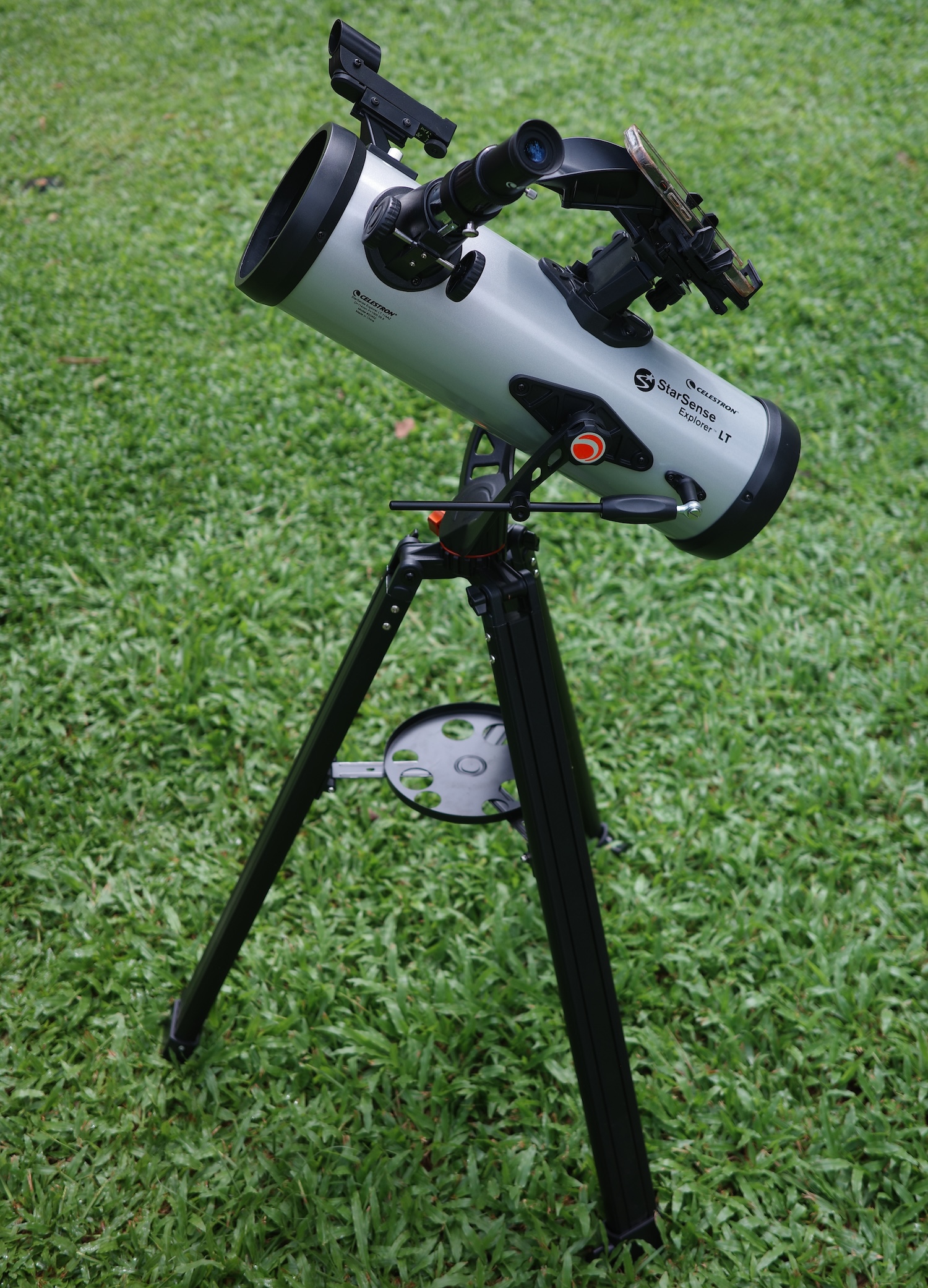The Optical Tube
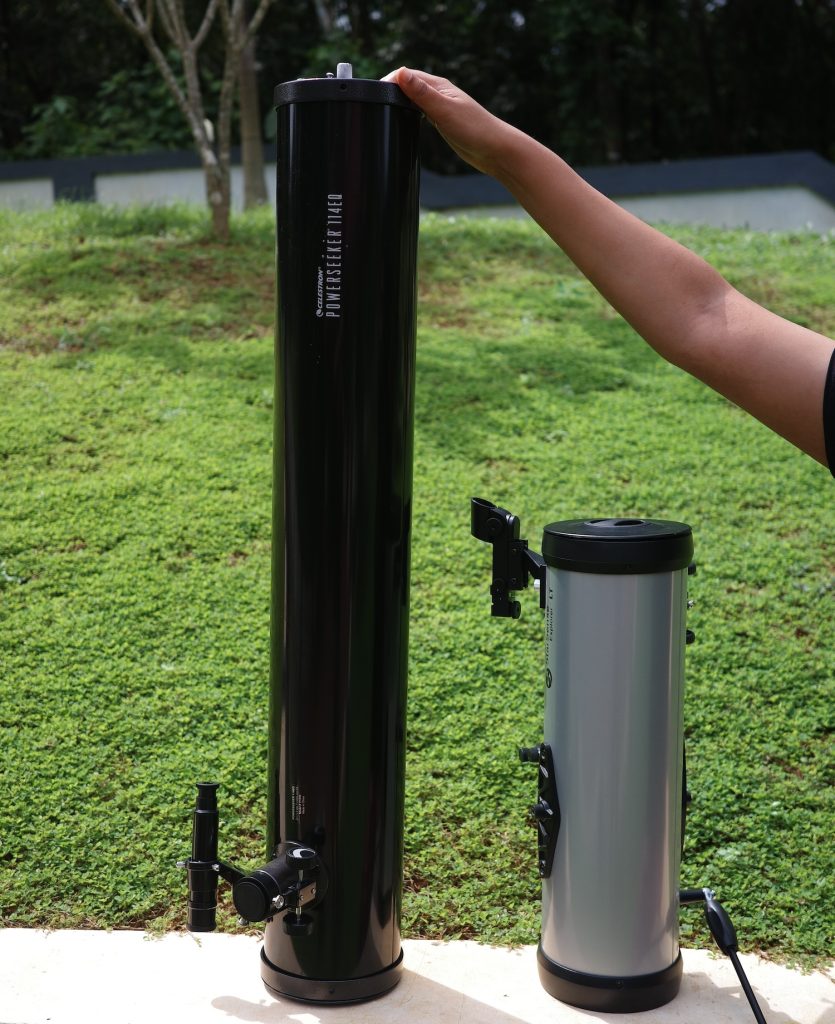
The StarSense Explorer LT 114AZ is marketed as a 114mm (4.5”) aperture Newtonian reflector with a focal length of 1000mm and focal ratio of f/8.8.
What should raise your eyebrows is that the scope’s optical tube is not actually 1000 mm long. This is unusual for Newtonian reflector telescopes, as they usually have a physical length similar to their focal length due to their non-folded optical design.

In actuality, the LT 114AZ’s optics are the same flawed, poor-quality Bird-Jones design as Celestron’s popular AstroMaster 114EQ that I’ve similarly reviewed. I’ve also encountered many other Bird-Jones reflector telescopes on the market that are sold as if they are Newtonian reflectors.
I’ve noticed that some retailers have elected to be a little more honest by marketing the scope as “catadioptric Newtonian” instead of “Newtonian.” But they all still tend to use wording that implies that this is a good design, which is just not true.

The Bird-Jones telescope design uses a spherical primary mirror instead of the parabolic mirror that true Newtonian reflector designs commonly use. To compensate for the massive spherical aberration caused by this spherical primary mirror, a “corrector lens” is added to the focuser drawtube. This “corrector” also roughly doubles the effective focal length of the telescope. This all might sound good on paper.
However, due to Celestron’s complete disregard for making a good implementation of the Bird-Jones, the primary mirrors are rarely actually spherical, and the corrector lenses are poor-quality. The corrector may simply be cheap Barlow lenses and induces glare and chromatic aberration.
The Harder Collimation
The use of the corrector in the Bird-Jones design also makes collimating the telescope very difficult.
To collimate a Celestron Bird-Jones telescope, I first have to dismantle the focuser with a screwdriver and then carefully unscrew a plastic retaining ring to remove the corrector. After that, I collimate it as I would a regular Newtonian. Once collimation is done, I need to carefully re-insert the corrector without getting any focuser grease or fingerprints on it and ensure it goes in the right way. This isn’t exactly something I can or want to do every time I set up the scope.
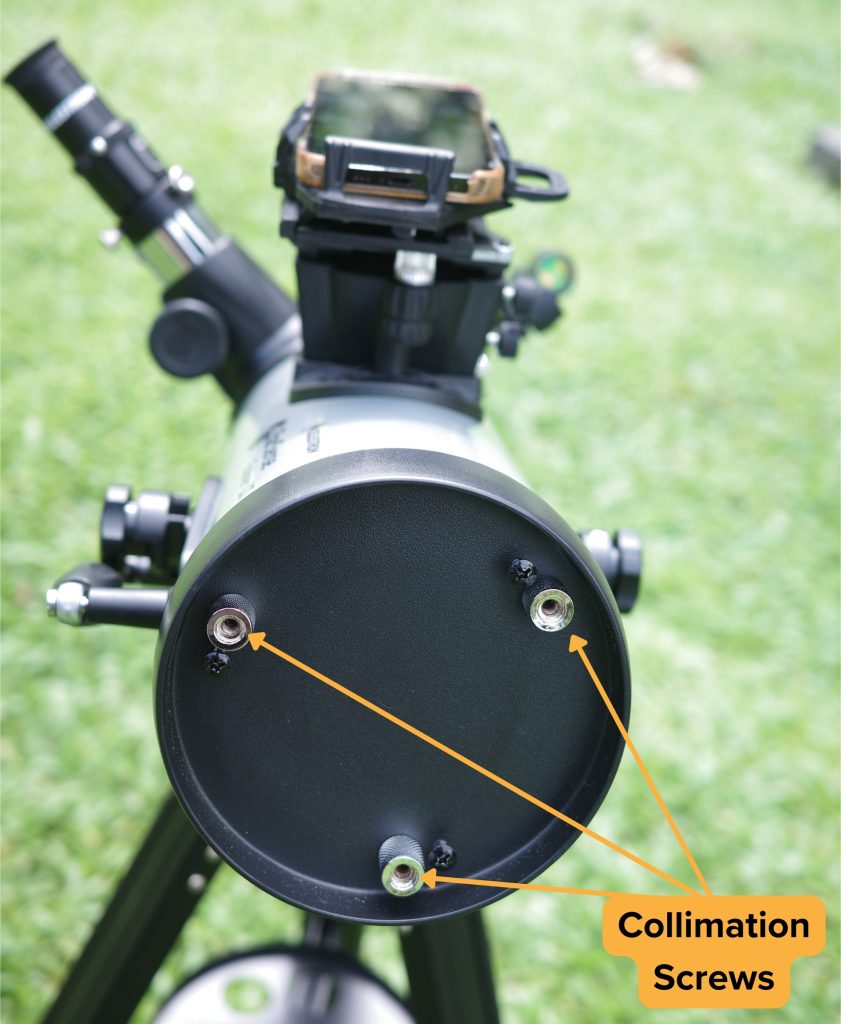
Thankfully, the primary mirror can be adjusted without any tools, which makes for a slightly less infuriating experience than a screwdriver.
You could also collimate on a star if you’re just making fine adjustments, but this takes practice.
The Impact On Views
When collimated, the StarSense Explorer LT 114 AZ can deliver acceptable-quality images. But the sharpness drops off as you get towards the edges of the field of view and the glare and chromatic aberration from the corrector don’t help.
I’m not saying that you can’t be happy with the views through this scope. The effort required just to get there and the fact that uncompromised true Newtonian reflectors with wider fields of view and similar or larger apertures are sold at the same price mean that I see pretty much no rational reason to willingly put up with the LT 114 AZ and its flawed optical design.
The Focuser
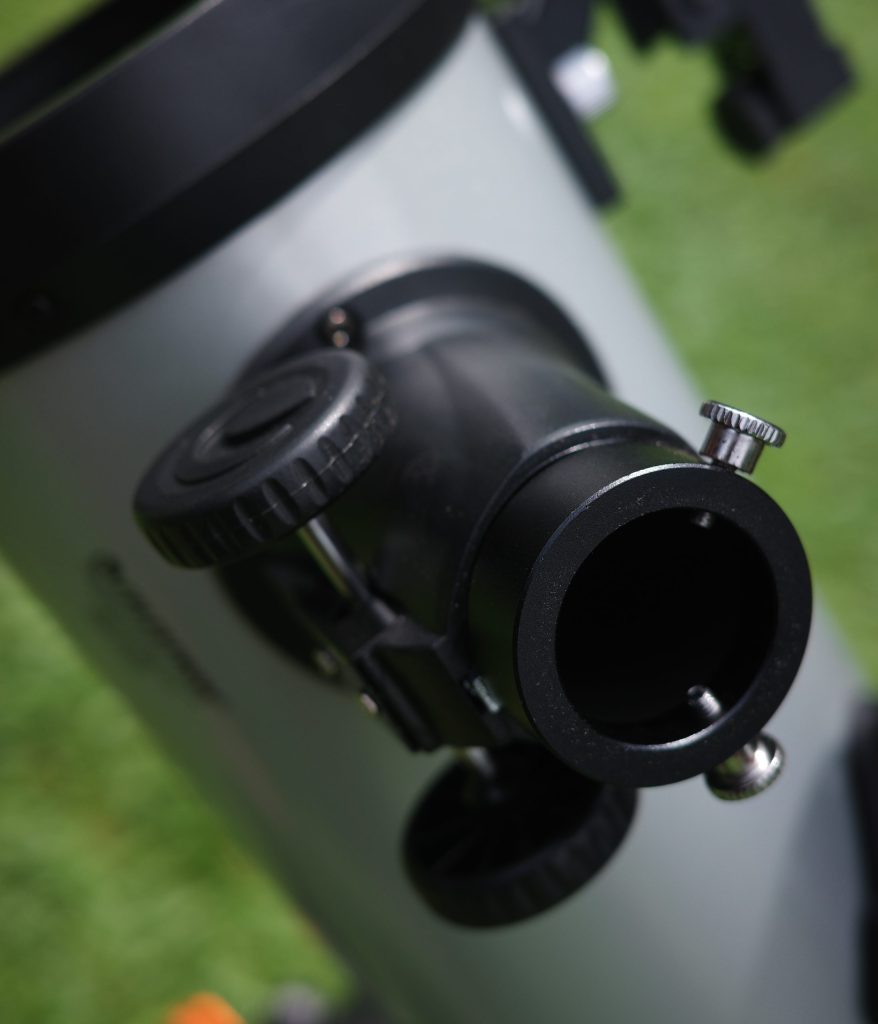
The 1.25” rack-and-pinion focuser works just fine for the purpose of holding most lightweight and inexpensive eyepieces with this telescope, such as the ones provided.
Decent Eyepieces, Poor Quality Barlow & Other Accessories
- For low power, we get a 25mm “Super” Konig with a 55-degree apparent field of view, providing 40x with the LT 114 AZ.
- For higher magnification, a 10mm “Super” Konig is provided, which produces 100x magnification with the LT 114 AZ.
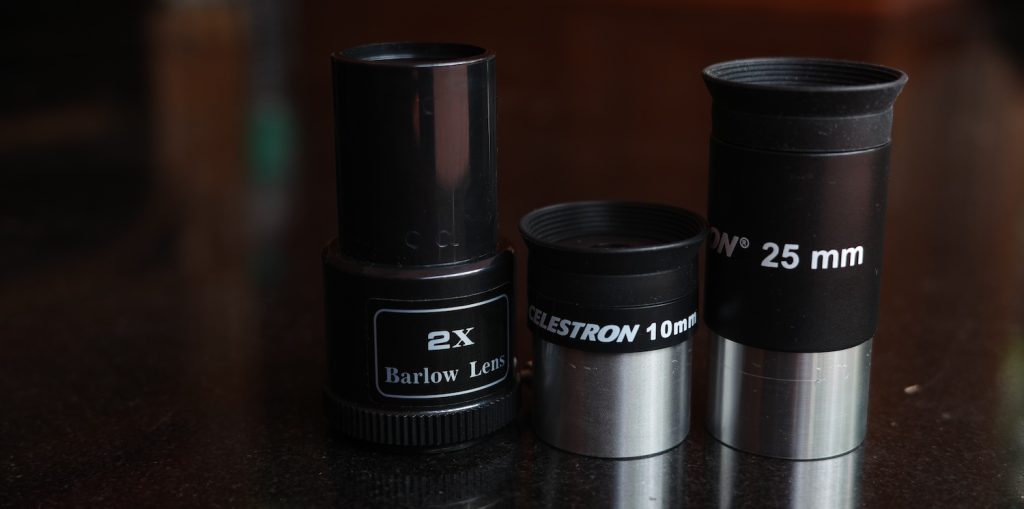
These eyepieces have plastic bodies but use glass optics.
I found this 10mm to be much more comfortable to use than the more common 10mm Plossl eyepiece that many similarly priced telescopes come with, thanks to the Konig design’s longer eye relief.
Celestron also includes an all-plastic 2x Barlow lens, which would give us 80x and 200x magnification with each of the stock eyepieces, respectively. However, as I’ve tested, this Barlow is poor in quality and almost unusable. Also, the Bird-Jones optics of the StarSense Explorer LT 114 AZ cannot handle magnifications exceeding about 100x or so even when collimated properly.
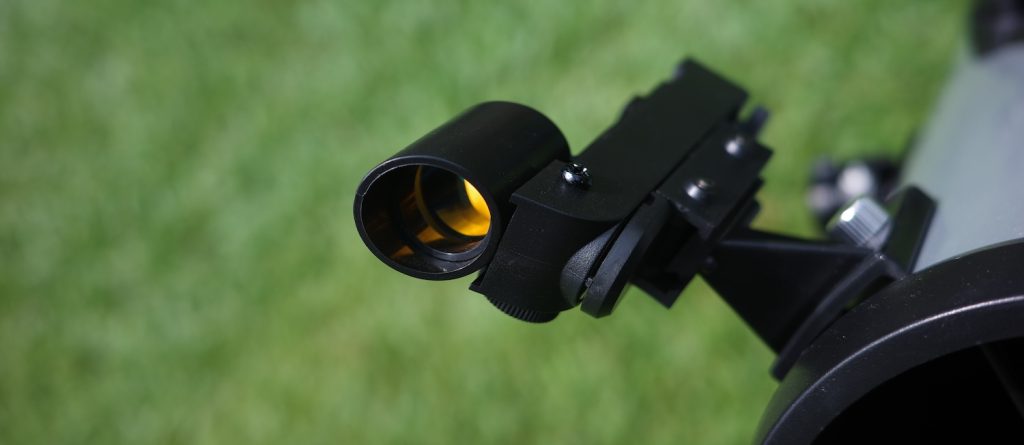
The red dot finder is the same generic “StarPointer” that Celestron and many other companies sell, and it runs on a CR2032 battery.
A Barely Adequate Mount
The mount provided with the StarSense Explorer LT 114 AZ is the same as Celestron provides with their non-StarSense 114mm Bird-Jones alt-azimuth mounted scopes—a spindly cast metal fork atop an extruded aluminium tripod.
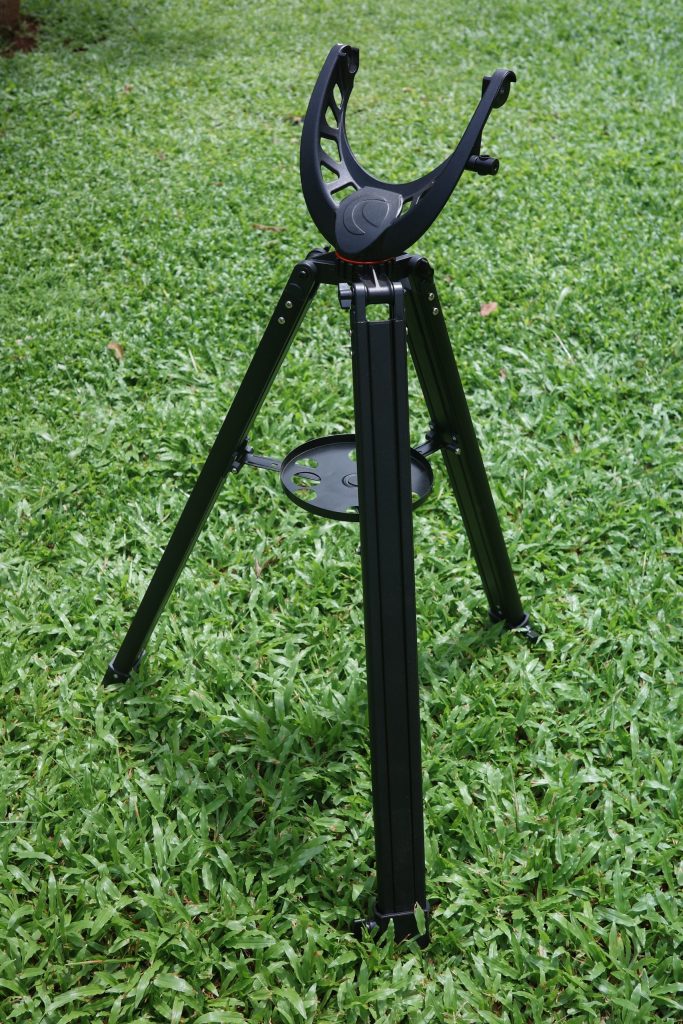
There are no slow-motion adjustments or locks on the mount head, and the short tube of the Explorer LT 114 AZ combined with its long focal length makes fine adjustments tricky.
The mount and tripod could certainly be worse, but it’s nowhere near as intuitive, convenient, or fun to use as a Dobsonian mounting.
The StarSense Explorer Technology & App
The StarSense Explorer technology is a creative solution to the complex hardware and setup requirements for a normal computerised telescope. It takes advantage of your phone, a precision device with a camera, gyroscopes, and a powerful processor that you already carry in your pocket, instead of trying to reinvent the wheel with internal electronics.
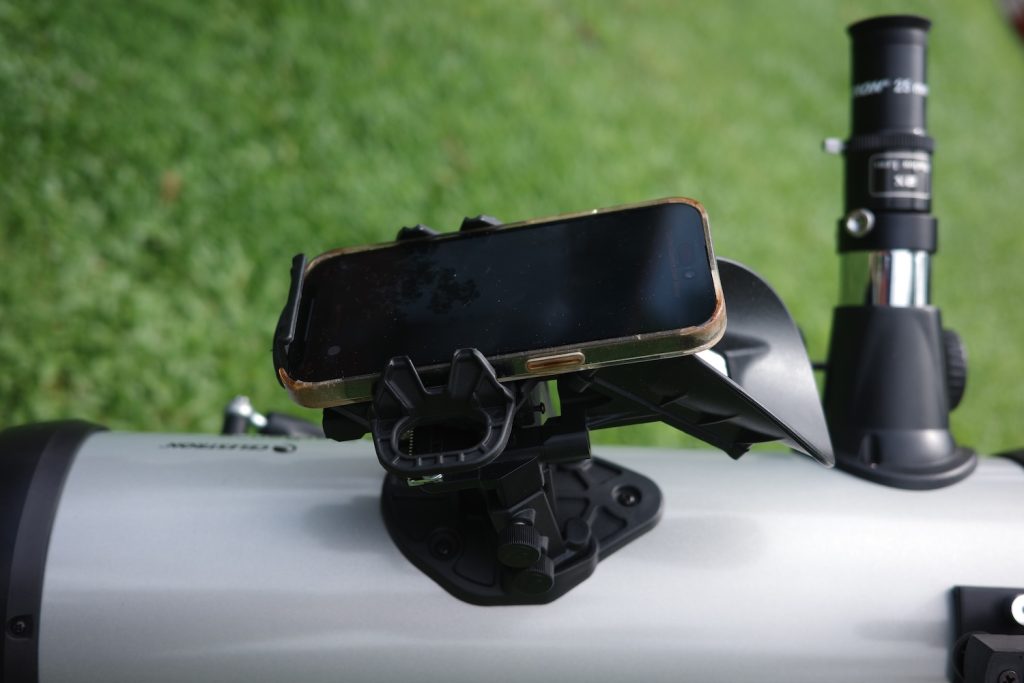
After a brief alignment procedure, the StarSense Explorer app uses a few plate-solving snapshots from your phone to get its bearings and then is able to guess your location in the sky thereafter pretty much solely using your phone’s gyroscopes. It won’t push the scope around for you but provides directions and instructions on where to aim, and the StarSense Explorer app has a catalogue of thousands of solar system and deep-sky objects that you can get directions to aim the telescope at. It’s sort of like an astronomical GPS.
The accuracy of the StarSense Explorer is largely determined by the quality of your phone’s onboard hardware and your alignment. But at the bare minimum, it will almost always get your targets in the field of view at low magnification. With my iPhone 14 Pro and an accurate alignment, I can achieve an accuracy of less than ¼ of a degree, or about half the area of sky the full Moon takes up.
Buying a Used Celestron StarSense Explorer LT 114 AZ
I’ve noticed that the StarSense Explorer LT scopes often have their StarSense Explorer phone docks cannibalised for reuse elsewhere and then resold on the used market. What’s left of the 114 AZ after this is a low-quality Bird-Jones reflector on a barely adequate alt-azimuth mount.
Even with the StarSense Explorer bracket and functionality, I don’t consider a used or new LT 114 AZ to be a great buy.
Alternative Recommendations
The StarSense Explorer LT 114 AZ is, of course, not a scope we’d recommend. Consider one of the following instead:
- In a similar price range:
The Zhumell Z114 and Orion StarBlast 4.5 Astro (near-identical to Z114 in performance, features, and design) offer the same aperture as the StarSense Explorer LT 114 AZ, but with a wider field of view at half the focal length, and with truly parabolic primary mirrors capable of delivering stunning performance and hassle-free collimation. These two telescopes, in the same order, are our favourite picks in this price range for the same reasons.
- With a little bit more money:
The Sky-Watcher Heritage 130P offers more aperture than the StarSense Explorer LT 114 AZ with a truly parabolic primary mirror, identical Super eyepieces included, and a much wider possible field of view thanks to its shorter focal length. The scope collapses to fit into a backpack and is easy to set up, aim, and use. The price is nominally higher than the LT 114AZ and its worthy competitors, like the Z114 and Orion StarBlast 4.5 Astro. A 150mm (6”) aperture model is also available, at an even higher price, but is still great value for money.
- Tripod-mounted scope options:
All the alternative recommendations above are dobsonian base telescopes, which are great value for money at any given price range. Tripod-mounted scopes, especially in the under £300 price range, would not be our first picks, but the equatorially-mounted Skywatcher Skyhawk 1145P Reflector Telescope or the StarSense Explorer LT 80 AZ will do if you must have one.
Aftermarket Accessory Recommendations
The StarSense Explorer LT 114AZ’s eyepieces are acceptable, but you’ll nonetheless want to pick up at least one or two more eyepieces for a wider range of magnifications along with perhaps a nebula filter. A 15mm “redline” or “goldline” eyepiece (67x) fits nicely between the provided oculars for medium magnification. Given that the scope’s images are already breaking down at 100x magnification with the provided 10mm, however, there is little point in buying any higher magnification short focal length eyepieces for use with the LT 114AZ.
While certainly expensive, a good UHC nebula filter will improve views of bright nebulae such as the Orion Nebula through the StarSense Explorer LT 114Z. To use it, you simply screw it onto any good low-power eyepiece, such as the provided 25mm unit. It will work with other scopes in the future too, as with any eyepiece upgrades. It isn’t a panacea for light pollution and only works on nebulae, while the scope’s limited field of view also limits your choices of targets compared to a faster f/ratio (and not to mention better quality) 114mm Dobsonian, but a quality nebula filter is a great item to have in your tool kit nonetheless.
What can you see with StarSense Explorer LT 114 AZ?
The poor-quality optics and long focal length of the StarSense Explorer LT 114 AZ somewhat limit what you can see with it.
- With LT 114 AZ, you are unlikely to be able to resolve the phases of Mercury, though Venus should be easy. The Moon shows a wealth of detail, including thousands of craters, valleys, ridges, plains, and mountain ranges.
- Mars’ polar ice cap can be seen; other surface detail is too difficult to resolve.
- Jupiter’s cloud belts can be seen along with its 4 large Galilean moons; detecting the Great Red Spot or the disks and shadows of the moons when they transit is quite difficult with the LT 114 AZ’s compromised optics.
- Saturn’s rings and a handful of moons can be seen, along with some cloud bands, but the Cassini Division proves troublesome to spot.
- Uranus and Neptune are going to look like dim, fuzzy patches with any scope under 8” or so in aperture; their moons are too faint for only 114mm of aperture to grasp, as is Pluto.
Light pollution is the main limiting factor in what we can see of deep-sky objects.
- The optics of the StarSense Explorer LT 114 AZ rule out any hope of resolving globular star clusters, which appear as featureless fuzzy balls.
- Open star clusters look magnificent from almost any viewing location thanks to their brightness, and the 114 AZ will show hundreds of colourful stars in bright ones like M35, M45 (the Pleiades), M11, or the Double Cluster.
- You’ll be able to see galaxies, too. But most are too dim to resolve details in. However, galaxies with prominent dust lanes like M82, M31, M64, and M104 reveal them under dark or semi-dark skies with some patience.
- Bright emission nebulae like the Orion Nebula (M42) or the Lagoon Nebula (M8) show star clusters within and wispy details that emerge best under dark skies or with a UHC narrowband nebula filter.

